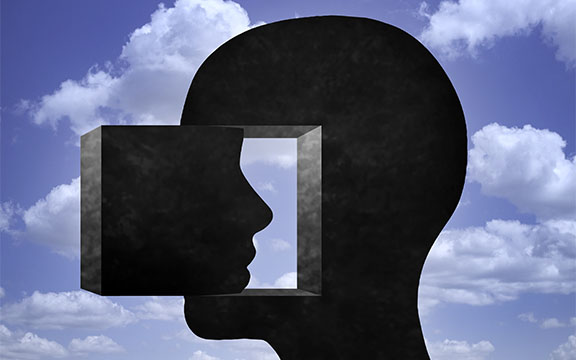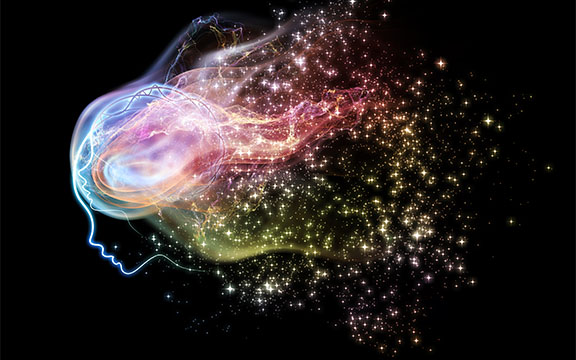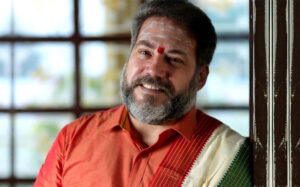
Photo: iStock
Introduction
The art and science of Yoga, one of the greatest treasures of India’s unique cultural heritage, has much to offer in terms of understanding the human mind. Yoga treats the human being as a multi-layered conscious being, possessing three bodies (sthula, sukshma and kaarana sharira) and being enveloped in a five-layered body (pancha kosha) of existence. This ancient science of self-mastery as codified by Maharishi Patanjali more than 2500 years ago, helps us to understand our mental processes as well as the cause and effect relations of a multitude of problems facing modern humanity.
Human beings are the victims of modern-day stress and stress-related disorders that threaten to totally disrupt lives. Yoga offers a way out of this whirlpool of stress and is a holistic solution to stress. Yogic lifestyle, yogic diet, yogic attitudes and various yogic practices help us to strengthen ourselves and develop positive health, thus enabling us to withstand stress better. This yogic health insurance is achieved by normalizing the perception of stress, optimizing the reaction to it and by releasing the pent-up stress effectively through various Yogic practices. Yoga is a holistic and integral science of life, dealing with the physical, mental, emotional and spiritual health of the individual and society.
Yoga may be defined as a process or journey, as well as a state or goal, in many ways. Yoga is the science and art of quieting the subconscious mind, a way of life; skill in action; union of thought, word and deed; integration of our personality at all levels; the science of conscious evolution and the method to attain the state of emotional and mental equanimity. The Yogarudda, or one who has attained to the state of Yoga, is described in the Bhagavad Gita as follows: One is one who is unaffected by the senses, not attached to the fruits of action and has renounced all desires.
Yogic View of the Mind
Yoga views the mind as having four internal processes, or antahkarana. These processes are the chitta (memory bank or the subconscious), the manas (conscious mind), the buddhi (discriminating intellect) and the ahamkara, or ego principle (consisting of the impure ego that feels all is “me” and “mine” as well as the pure ego, which understands that “all is mine as a manifestation of the Divine”). The buddhi is further said to possess three powers: the power of will (Iccha Shakti), the power of action (Kriya Shakti) and the power of wisdom (Jnana Shakti). It is important that all these powers work together in synchrony, otherwise there will be disaster.
Yoga also describes chitta bhumi, or states of the mind. These consist of the undeveloped, inept mind that is as dull as stone (mudha), the totally distracted state of mind (kshipta), the partially distracted state of mind (vikshipta), the concentrated state of mind (ekagratha) and the controlled mind of the true yogi (niruddha).
The modifications or fluctuations of the mindstuff, as described by Maharishi Patanjali in the Yoga Sutras, are of five types. These are pramana (cognition), viparyaya (misconception), vikalpa (imagination), nidra (sleep) and smrithi (memory). He also states that, when the mind is not controlled, there is identification with these vrittis (vritti sarupyam itarata) and that the whole process of Yoga is aimed at “chitta vritti nirodhah” in order that we are established in our true Self (swarupevastaanam). Patanjali elucidates that the key to success is dedicated and determined practice (abhyasa) and a detached attitude towards everything (vairagya).

Photo: iStock
The Worldly Person and the Yogi
There are some important differences in the way the worldly person and the realized yogi view the world and life in general. Worldly people always feel that their problems lie elsewhere and that they are innocent victims of circumstances and fate. Yoga teaches us that most of our problems lie within us and that we have to undergo conscious change in order to solve them. Yogamaharishi Dr. Swami Gitananda Giri used to often tell his students, “You don’t have any problem—you are the problem!”
While the worldly person searches for happiness in the pursuit of external experiences, the yogi realizes that supreme happiness (paramanandam) lies within our inner being and that we only need to realize the folly of looking for happiness outside to be truly happy. True contentment (santhosha), that is one of the pancha niyama (five ethical observances of Ashtanga Yoga), is the key to unexcelled happiness. Pujya Swamiji used to say, “Health and happiness are your birthright—claim them! Don’t barter them away for the plastics of the modern world.”
Whereas the worldly person fears hell and aspires for a heaven to be attained after death, the yogi realizes that heaven and hell are no more than planes of consciousness. Heaven and hell lie within us, and it is for us to determine whether we want our life to be heaven or hell, for ourselves and for those around us.
Yogic Patho-psychology of Disease
Stress and stress-related disorders are the bane of the modern age, and Yoga offers us an interesting insight into their cause and effect. The Nirvana Prakarana, of the Laghu Yoga Vashishta, describes the origin and destruction of mental and bodily diseases. Sage Vashishta teaches Lord Rama that there are two major classifications of disease. Those that are caused by the mind are primary (adhija, the psychosomatic, stress disorders), while those that afflict the body directly are secondary (anadhija, infectious disease, accidents, etc). The primary disease has two subdivisions. These are the samanya (ordinary physical diseases) and the sara (the essential disorder of rebirth). Samanya diseases are the ones that affect us physically and may be destroyed by the correction of the mind-body disharmony. However only Atma jnana (knowledge of the Self) can destroy the sara, or essential disorder of rebirth.
Samanya adhija vyadhi are the modern psychosomatic disorders such as hypertension, diabetes, bronchial asthma, peptic ulcers, irritable bowel syndrome, etc. These psychosomatic disorders (adhi-vyadhi) are caused in the following manner. Disturbances at the level higher (adhi) than the plane of mind (manomaya kosha) cause agitation in the mental body leading to haphazard flow of prana and instability of the nadis in the energy body (pranamaya kosha). This ultimately causes disease (vyadhi) in the physical body (annamaya kosha) through hypo, hyper and disturbed metabolic activities such as secretion, digestion, assimilation and utilization.
Thousands of years ago, Sri Krishna in the Bhagavad Gita (often referred to as the bible of Yoga) taught us about the Yogic patho-psychology of stress and how through our attraction to the worldly sensory objects, we cause our own destruction. These potent ancient teachings hold true even in today’s world. In chapter two (Samkhya Yoga), in verses 62 and 63, the pattern of behavior (stress response) is given that ultimately leads to the destruction of human beings. Verse 62: “Brooding on the objects of the senses, man develops attachment to them; from attachment (sangha or chanuraaga) comes desire (kama) and from unfulfilled desire, anger (krodha) sprouts forth.” Verse 63: “From anger proceeds delusion (moha); from delusion, confused memory (smriti vibramah); from confused memory the ruin of reason and due to the ruin of reason (buddhi naaso) he perishes.” In verse 64 of the second chapter, Sri Krishna also gives us a clue to equanimity of mind (samatvam) and how to become a person settled in that equanimity (stitha prajna), who is not affected by the opposites (dwandwas). He says, “But the disciplined yogi, moving among the sensory objects with all senses under control and free from attraction (raga) and aversion (dvesha), gains in tranquility.”
According to Maharishi Patanjali, most of our problems stem from the five psycho-physiological afflictions (pancha klesha) that are inborn in each and every human being. These pancha klesha are ignorance (avidya), egoism (asmita), and our sense of needing to survive at any cost (abinivesha), as well as the attraction (raga) to external objects and the repulsion (dvesha) to them. Ignorance (avidya) is usually the start of most problems along with the ego (asmita). Then, our sense of needing to survive at any cost (abinivesha) compounds it further. Both attraction (raga) to external objects and the repulsion (dvesha) to them need to be destroyed in order to attain tranquility as well as equanimity of emotions and the mind.
Maharishi Patanjali further states that the practice of Kriya Yoga (Yoga of mental purification), consisting of tapas (disciplined effort), svadhyaya (self-analysis) and Ishvara pranidhana (surrender to the Divine will), is the means to destroy these five mental afflictions and attain to the state of samadhi, or oneness with the supreme Self or the Divine.
How Does Yoga Help Us?

Photo: iStock
The yogic concepts of samatvam (mental and emotional equanimity) and stitha prajna (the even minded, balanced human being) give us role models that we may strive to emulate. An understanding of the pancha kleshas (five psycho-physiological afflictions) and their roles in the creation of stress and the stress response help us to know ourselves better and understand the hows and whys of what we do. The concept of the pancha koshas (the five-layered existence of human beings as elucidated in the Taittiriya Upanishad) helps us to understand that we have more than only the physical existence and also gives us an insight into the role of the mind in causation of our physical problems as well as psychosomatic disorders. All of these concepts help us to look at life with a different perspective (Yoga drishti) and strive to evolve consciously towards becoming humane beings.
The concept of vairagya (dispassion or detachment), when understood and cultivated, enables us to be dispassionate to the dwandwas (the pairs of opposites) such as praise-blame, hot-cold and the pleasant-unpleasant situations that are part and parcel of our existence in this life. The regular practice of Yoga as a way of life helps us reduce the levels of physical, mental and emotional stress. This yogic way of life lays emphasis on right thought, right action, right reaction and right attitude. In short, Pujya Swamiji defined Yogic living as “right-use-ness of body, emotions and mind.”
The regular practice of Yoga asanas, kriyas, mudras, bandhas and pranayamas helps to recondition the physical (annamaya kosha) and energy (pranamaya kosha) bodies. The practice of pratyahara, dharana and dhyana techniques helps to recondition the mind-body (manomaya kosha) apparatus. All of these Yogic practices help to foster a greater mind-emotions-body understanding and bring about the union and harmony of body, emotions and mind. This righteous (right-use-ness) union is Yoga in its truest sense.
Patanjali advises us to cultivate the following attitudes for right living. These attitudes are friendliness toward those who are happy (maitri-sukha), compassion toward those who are miserable (karuna-dukha), cheerfulness toward the virtuous (mudhita-punya) and indifference toward the wicked (upeksha-apunya).
Yoga helps us to take the right attitude toward our problems and thus tackle them in an effective manner. “To have the will (Iccha Shakti) to change (Kriya Shakti) that which can be changed, the strength to accept that which cannot he changed, and the wisdom (Jnana Shakti) to know the difference” is the attitude that needs to the cultivated. An attitude of letting go of the worries, the problems and a greater understanding of our mental process helps to create a harmony in our body and mind, whose disharmony is the main cause of aadi-vyadhi or psychosomatic disorders.
Conclusion
Through the dedicated practice of Yoga as a way of life, we can become truly balanced human beings (sthitha prajna) with the following qualities as described in the Bhagavad Gita:
- Beyond passion, fear and anger (II.56)
- Devoid of possessiveness and egoism (II.71)
- Firm in understanding and unbewildered (V.20)
- Engaged in doing good to all beings (V.25)
- Friendly and compassionate to all (XII.13)
- Having no expectation/pure and skillful in action (XII.16)
Yogis wish peace and happiness not only for themselves, but also for all beings on all the different planes of existence. They are not individualists seeking salvation for only themselves but, on the contrary, are universalists seeking to live life in the proper evolutionary manner to the best of their abilities and with care and concern for their human brethren, as well as all beings, on all planes of existence.
 Yogacharya Dr. Ananda Balayogi Bhavanani was born to the world famous Yoga team of Yogamaharishi Dr. Swami Gitananda Giri Guru Maharaj and Puduvai Kalaimamani, Yogamani, Yogacharini, Smt. Meenakshi Devi Bhavanani and has written 23 books and presented 20 DVDs on Yoga. He has had more than a hundred scientific papers, scientific abstracts and compilations on Yoga research published. Yoga for him is not just the performance of a few Asanas or Pranayamas but is a means for evolution of the human mind in to further states of consciousness and awareness.Dr. Ananda is Chairman of the International Centre for Yoga Education and Research (ICYER) an internationally acclaimed Yoga Institute established as Ananda Ashram in 1968. He is also Chairman of Yoganjali Natyalayam, a world famous Institute of Yoga, Bharat Natyam, and Carnatic Music established in Pondicherry in 1993. He is at present, Deputy Director of the Center for Yoga Therapy, Education and Research (CYTER) at MGMCRI, Sri Balaji Vidyapeeth.
Yogacharya Dr. Ananda Balayogi Bhavanani was born to the world famous Yoga team of Yogamaharishi Dr. Swami Gitananda Giri Guru Maharaj and Puduvai Kalaimamani, Yogamani, Yogacharini, Smt. Meenakshi Devi Bhavanani and has written 23 books and presented 20 DVDs on Yoga. He has had more than a hundred scientific papers, scientific abstracts and compilations on Yoga research published. Yoga for him is not just the performance of a few Asanas or Pranayamas but is a means for evolution of the human mind in to further states of consciousness and awareness.Dr. Ananda is Chairman of the International Centre for Yoga Education and Research (ICYER) an internationally acclaimed Yoga Institute established as Ananda Ashram in 1968. He is also Chairman of Yoganjali Natyalayam, a world famous Institute of Yoga, Bharat Natyam, and Carnatic Music established in Pondicherry in 1993. He is at present, Deputy Director of the Center for Yoga Therapy, Education and Research (CYTER) at MGMCRI, Sri Balaji Vidyapeeth.

